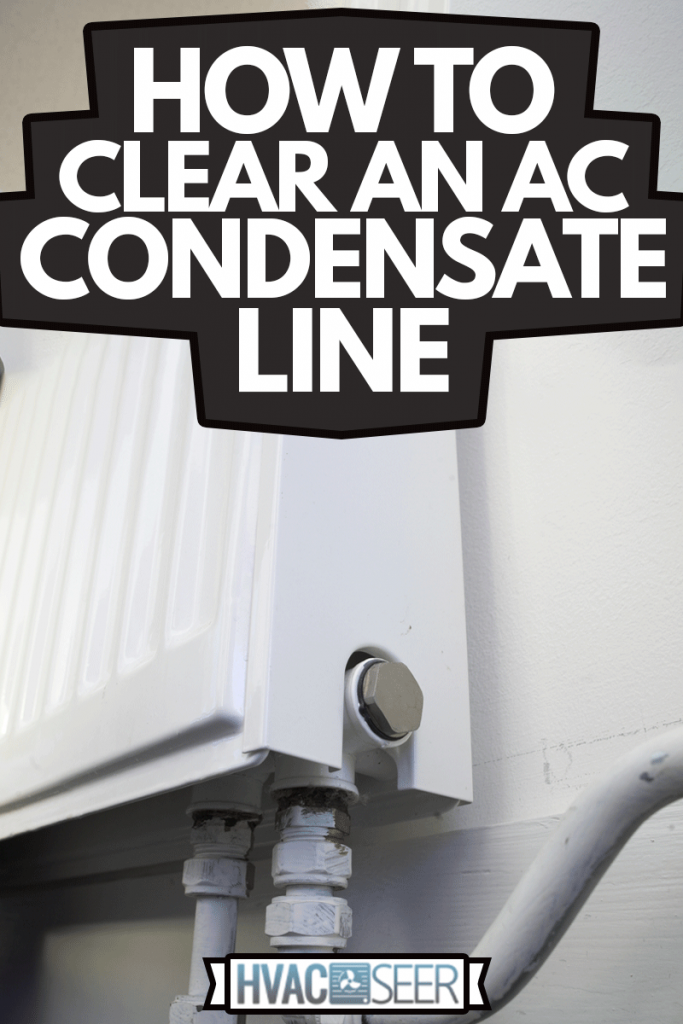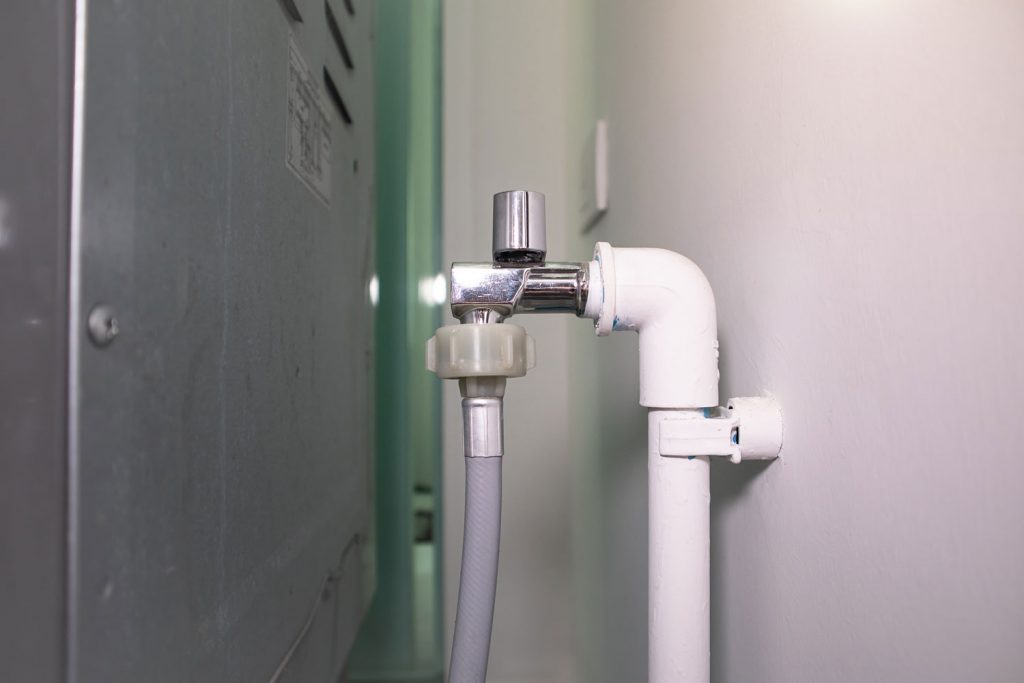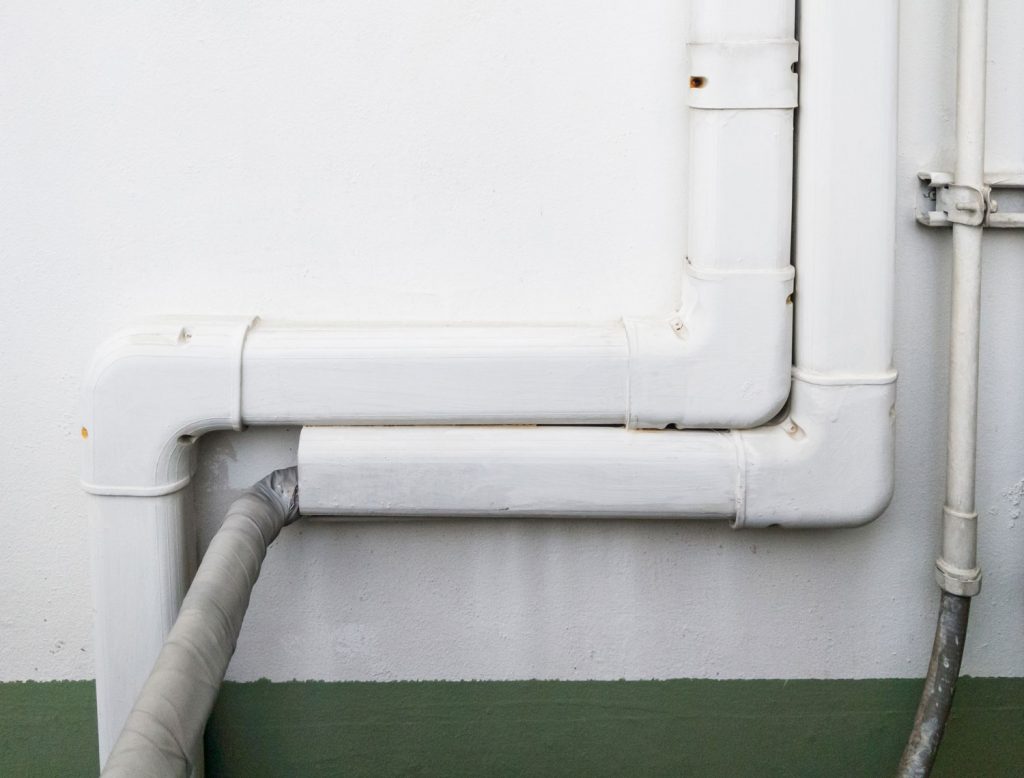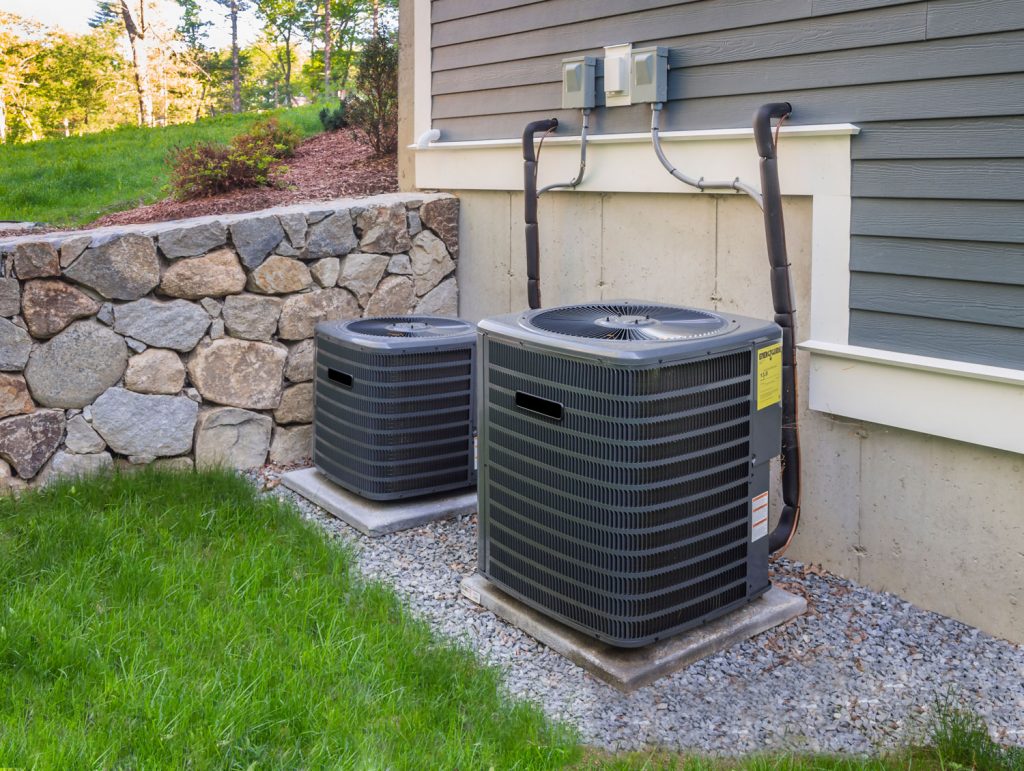Many HVAC service calls include clearing clogged air conditioner drain lines due to leaks and other issues. If your air conditioner has a clogged condensate line, it could cause issues with your entire HVAC system. So how do you clear this clog? We have researched the best way to effectively and quickly clear your AC condensing line.
Here are the steps to clean an AC condensate line:
- Shut off the AC
- Check the drip pan
- Clean the drip pan
- Inspect and vacuum the condensate line
- Pour diluted vinegar down the line
- Spray the line with a water hose
AC units are designed to absorb and remove humidity from the interior of your home and transport it to the outside, thus the reason for the condensate lines. However, these lines can become clogged over time, especially if they aren't cleaned regularly. Continue reading to learn how to keep them clean and prevent them from clogging.

Steps To Clear An AC Condensate Line

Condensate lines will often become clogged when your air conditioner doesn't receive regular maintenance. Over time, these lines will become filled with rust, dirt, and debris collected from the air inside your home.
Things you'll need:
- Distilled vinegar
- Water hose
- Plastic water bottle
1. Shut off the AC
Start by shutting off the power to your HVAC system. Turn it off at the thermostat and then go to the circuit breaker and flip the switch to the "Off" position.
2. Check the drip pan
You can usually find the drip pan underneath the interior side of the handler. To access it, you may need to remove the front panel of your furnace.
You can also follow the condensate line from the drip pan up to its top. The condensate line is located at the access point of the furnace and is usually connected to a T-shaped vent or PVC pipe.
3. Clean the drip pan
Once you locate it, empty the drip pan and then clean the pan (if needed) with warm water and dish soap.
4. Inspect and vacuum the condensate line
Next, take a shop vac and place it on the end of the condensate line. Next, turn the shop vac on and use it to remove any clogs from the line. Run the vacuum for about 1 to 2 minutes and then inspect the line again to see if there are additional clogs.
5. Pour diluted vinegar down the line
If there is still a clog, take two tablespoons of vinegar and combine it with two cups of water inside a plastic water bottle. Next, pour the solution down at the condensate line and let it sit for about 5 to 15 minutes. Next, rinse the line with cool water.
6. Spray the line with a water hose
If you're still having trouble clearing the line, consider using a long flexible rubber tube to remove it manually. You can also remove the hose and take it out back to spray it with the water hose. It's best if you have a nozzle spray on the water hose so that the force can dislodge the clog.
At this point, if the line is still clogged, you may need to contact an HVAC specialist or have it replaced completely. You can find these rubber drain lines at your local hardware store or online for about $15 to $25 each.
Is bleach or vinegar better for an AC drain line?
Most HVAC professionals recommend using vinegar instead of bleach, as bleach can be harmful to your AC system, particularly if your drain line has copper tubing. However, it's important to remember that vinegar is a corrosive liquid, so it's best to thoroughly rinse your tubing out after about 15 minutes.
Also, never pour vinegar directly into the tubing by itself. Always dilute it first with at least three parts of water. Keep in mind that if you are worried about harming your pipes, you can also use a shop vac to remove any clogs or a water hose with a strong spray nozzle.
What happens if your AC drain line is clogged?

If your system's condensate drain line becomes blocked, the moisture that your AC removes from your air simply won't go anywhere.
The drain pan can become clogged with water and cause flooding, which can damage your home's drywall and flooring. The draining water can also get through the ceiling or drip onto electrical wires, causing them to shorten.
What are the signs when the AC drain has a clog?
Although a clogged drain line might look fine at first, you will likely notice problems over time. Here are a few signs you might notice if there's a blocked condensate drain line in your HVAC system.
Warped floors
The trapped water that builds up in your drain line can quickly seep into your home's flooring. This can cause warped floors that can lead to foundation damage.
You may also notice that there is standing water around your furnace unit. If you suspect that the pooled water is coming from the drip pan, it's best to reach out to an HVAC specialist.
The HVAC system shuts down
The drip pan sensor on your unit might eventually shut down power in the event of an overflow. This feature helps to prevent your home from flooding. The unit will immediately turn off if you try to restart it. To make the unit functional again, you'll need to fix the clog ASAP.
Noticeable mold or bad smells
When the AC drain is clogged, it may cause water to accumulate around the drain pan, which could lead to mold growth in the area around your furnace, which may in turn leak to other areas of your home (especially if the unit is in the attic).
You may also notice a musty odor at some point. This is an indication that your unit requires attention.
How do you prevent an AC drain line from clogging?

The best way to prevent your air conditioner drain line from clogging is simply maintenance. HVAC professionals recommend that you have your system inspected and serviced at least once a year but ideally twice a year.
In addition to scheduled maintenance, below are a few ways that you can help prevent the line from clogging.
Flush the drain line regularly
Routine maintenance can be an effective way of keeping the line clean. Warm water alone can be used to flush the lines monthly. Since most HVAC experts are against using bleach, it's best to use diluted vinegar if you need to give the lines a more thorough cleaning every now and then.
Have the drain line installed professionally
Sometimes, blockages can occur because drain lines weren't installed correctly. This can be the case if a homeowner installed the lines. Lines that are not properly sloped can lead to blockages. In this case, an experienced HVAC professional may be needed to reroute the line.
Clean the condensate trap
Similar to the previous point, the condensate trap can also be installed incorrectly or become clogged. The trap can be prone to clogs if it's never serviced, but it can be easily avoided by simply cleaning the ports. To do this, remove the entire trap and flush it with vinegar and water.
You can also use a soft-bristled plumbing brush to remove any grime located on the inside of the trap. Before removing the trap, it's helpful to first take a picture of it in case you have trouble with the reassembly.
Change or clean the air filter regularly
Cleaning or replacing the HVAC system's air filter on a regular basis will always be recommended. This is because a clogged filter can lead to numerous issues with the system. If the filter is clogged, it can cause dust to build up in the unit which will make it easier for a clog to form in the condensate line.
A high-quality or clean air filter can help remove impurities in the air so the removed condensation contains as little debris and dirt as possible.
How much does it cost to unclog an AC drain line?

It depends on the reason for the clog and how easily it can be removed. On average, it may cost anywhere from $75 to over $300 for a clog removal.
If the technician needs to perform additional tasks, this can cause the price to increase. For example, if you need a new condensate trap, this may add $25 to $40 to the cost.
Wrapping things up
As you can see, a clogged condensate line can lead to several issues within your air conditioner and HVAC system. Clogged lines can be prevented by having your HVAC system serviced annually and performing a bit of home maintenance.
Before you go, be sure to check out these other posts:

